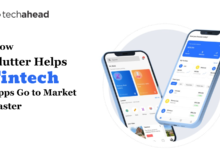
5 Ways to Make Your Mac Run Faster
Did you know that there are more than 100 million active Mac users across the globe? Macs make for incredible computers and resources that are perfect for any pursuit in life. Unfortunately, it is normal over a long period of time for your Mac OS to start to slow down.
It is important that you know what to do in order to make your Mac run faster when you begin noticing that you’re the owner of a slow Mac. The good news is that there are plenty of proven and easy approaches to take to return your slow computer to its previous glory. Luckily, you’re in the right place to learn more about Mac cleanup and making your Mac run faster.
Continue reading this article to learn five helpful tips that will get your Mac up to speed in no time.
Table of Contents
1. Quit Unnecessary Apps
One of the most common reasons for a slow computer is that there are tons of apps and programs running that aren’t getting used. Even if you’re not using them, these apps are sitting in the background making your computer’s processor work overtime in order to keep them running.
The best way to find which apps are running in the background that you don’t need is to pull up the Application Switcher on your Mac computer. Hold in the Command button and then hit Tab and it will bring up your task manager that displays all of your active apps.
Once you’ve taken a look at the apps that you’re running you’ll be good to start quitting the ones that you don’t need. It is important to note that newer Mac computers will have a much easier time running many apps at a single time versus older Mac computers. With older Mac computers you’ll likely want to close out of all but the most essential apps that you need.
Another handy way to tell which apps are running on your Mac is the Menu bar. This shows you the apps on your computer that are active but in the background. It is perfect for monitoring what’s running and what might be slowing down your computer when you use it.
2. Manage Your Hard Drive Space
Another big cause of a slow Mac computer is a hard drive that is approaching full capacity. If you start to get low on disk space then you’ll start to notice a steep decline in the performance of your computer. You can check the status of your hard drive’s capacity by looking at the About This Mac section and clicking the Storage option.
From there, you’ll need to take a look and make sure that you have ample storage space on your Mac computer in order to make your Mac run faster. A good rule of thumb is to always keep 20 percent of your hard drive space open on your computer. This will help you get the best computer performance.
You can also get help from the Mac OS by hitting the Manage button. This button will give you different suggestions that will help you optimize your storage and performance options. One suggestion will be using iCloud services to take some stress off of your computer’s hard drive.
You can also optimize your storage by removing any hefty downloads like movies or TV shows that you’ve downloaded to your computer’s hard drive. You should also set up your computer’s trash to empty itself automatically. This will help you save space and increase performance by getting rid of anything that has sat in your trash for more than 30 days.
3. Organize Your Files
It might surprise you to know that having tons of files on the desktop of your computer will slow down your computer’s performance. These folders and pictures on your desktop show up as a thumbnail image that takes up space and processing power on your computer.
A great approach to take is to move these documents into files. If there isn’t a perfect file to place them in then create a file that is suitable. This will not only help you to be more organized and have an easier time finding your photos and documents, but it will also help you get your Mac to run faster when you use it.
Do your best to avoid the desktop of your computer as a temporary spot for storage. Be sure to consider different resources for keeping your Mac running fast like setapp.com.
4. Limit Browser Tabs
It doesn’t matter if you choose to use Google Chrome or Safari or even Bing, running a bunch of different browsers is going to put a damper on your computer’s performance. If there are sites that you want to revisit but don’t need open at this point in time then consider bookmarking them. It will make it easy for you to go back and find them when you need them.
Another great way to improve the speed of your Mac is to suspend different tabs on your browser. It will keep them from running when you’re using other functions of your computer.
5. Update Your Mac Computer
A key component in making your Mac run faster is keeping your Mac OS updated. Downloading new Mac OS updates will provide you with new tools and features on your computer but it doesn’t mean that it will take up more space. Apple includes optimization with their Mac OS software updates to ensure that your computer still runs fast with all of the new features.
In addition, updating your Mac computer will keep it safe and secure when you use it. You’ll have the stability that will keep your computer in great condition and running as fast as ever.
Make Your Mac Run Faster Today
There are a number of great things that you can do in order to make your Mac run faster. Try to limit the number of tabs you keep open and running in your browser. You should also do what you can to keep your Mac computer’s Mac OS up-to-date. Managing your hard drive space and keeping your desktop clean is also great for helping your Mac run faster.
For more helpful articles on a range of topics, make sure to check out our blog today.








